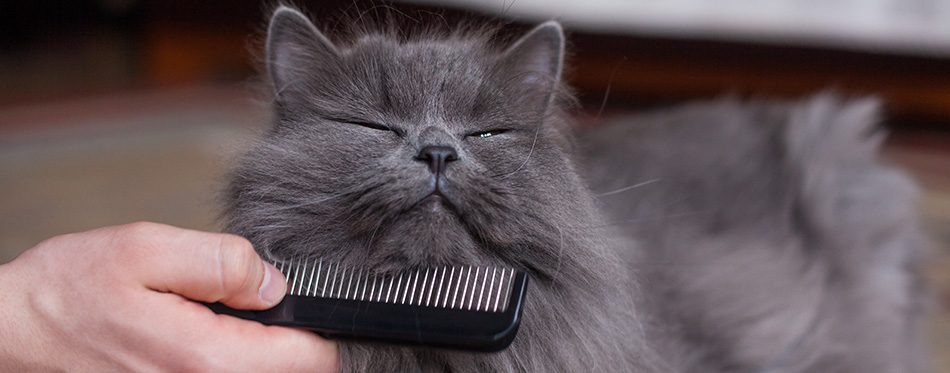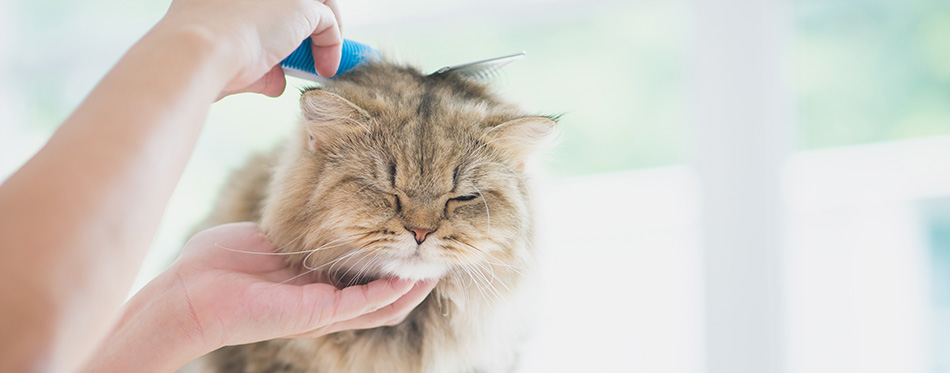If you have rescued a long haired cat with mats in their coat or if you have discovered mats on your own kitty, it is very tempting to reach for the scissors and cut them out. It seems like a quick and painless remedy. However, this is not advised by veterinarians as it can result in scissor wounds and an emergency visit to their clinic.
A gentler and more gradual approach is best although this problem will take time and patience to solve. Read on to find out how to get mats out of cat fur and how to prevent it from happening again.
How to Get Mats Out of Cat Fur
Mats are clumps of hair in your cat s fur that often start close to your cat s skin. They are unsightly but can also be uncomfortable and even painful for your cat. They can cause skin irritation and this can lead to infection. Mats can occur in all breeds but are more common in long haired cats.
Mats in a cat s fur can be a sign that something is wrong. Cats are usually very efficient at grooming themselves and do not need human help! However, if they are very old, obese or ill, they may not be able to do this as efficiently as before and mats can build up even in a short haired cat. If you are at all concerned that your kitty has health problems, you should speak to your veterinarian about your cat’s condition. Nevertheless most of the time, a few mats on a long haired kitty are not a major cause for concern and should be something that you can deal with yourself without having to take your kitty for professional grooming. You can be successful even if you don’t have any experience. You simply need patience and a co-operative cat!

Why you Should Not Use Scissors on Matted Cat Fur
Scissors can seem like a convenient and quick way to remove mats from a cat s coat but sadly, thousands of cats get injured in this way every year. Beneath their thick coat, a cat’s skin is very delicate and thin – it punctures easily. If you use scissors to cut out the mat, in can be hard to see where the hair ends and the skin begins. Even if you take care, it is very easy to cause a nasty scissor injury that could need attention from a veterinarian.
Also, as you are using cutting at the cat matted fur, your kitty may decide that they have had enough and make a sudden movement. This could cause injury to both you and your cat.
Using the Correct Equipment
You are far more likely to succeed if you collect all the equipment that you need before you start. Here are the basics that you should collect:
- Cat treats: The process will go a lot smoother if you have a calm and relaxed kitty and if you give your cat some tasty treats to distract them it will help a lot!
- Cornstarch or talcum powder: To make the hair silky and more likely to release the mat
- Spray bottle: With special cat hair conditioner or a detangler spray
- Brush or comb: Several options are available
- Clippers or scissors: With a blunt end to protect your cat s skin and only to be used if absolutely needed
There lots of different brushes and combs that can be used as a grooming tool for cats. Some owners prefer a wide toothed comb but others prefer to use an undercoat comb that has lots of small and curved blades close together that reach deep in the coat and close to the skin. As the name suggests, a razor comb is a combination of a comb and a razor. Whilst they can be useful, it is best to stick with a comb for removing mats from cats if you possibly can.
You may also like our guides on Brush For Cats and Cat Brushing Gloves.
Here’s How to Remove Matted Cat Hair:
Loosen the Cat Matted Fur
Make sure that your kitty is relaxed and happy. Give them their favorite treat to distract them from focussing on what you are doing. Sprinkle some cornstarch on the mat and work it in gently with your fingers. Eventually, you should be able to lift the mat a small distance above the skin so that you can clearly see your cat s skin underneath it. It may take several sessions to achieve this as cats can get fed up. Several short sessions would be better than one long session that stresses both you and your pet out.
Gently Brush the Matted Cat Hair
Use a brush with teeth or a wide-toothed comb to work at the mat. Grasp the mat firmly with your fingers close to the skin (at the base of the mat) and start to brush away from the body. If you hold the base of the mat, it will prevent you from pulling at your cat’s skin and stops them from getting stressed.
When you brush, start at the end of the mat, brushing away from the skin and gradually loosening the tangles. This is the best way of ensuring that you do not get the brush stuck but still have accessibility to all sides of the mat. Gradually work your way down to the base of the mat. If your cat has a very thick undercoat, you may need to try an undercoat comb when you reach the lower layers. This has two layers of teeth that are at different lengths and which therefore provide accessibility to all of the mat.
Try Matted Cat Hair Solution or Detangler
If you find that this method is not getting you anywhere and the mats are persisting, you could try a razor comb – this is sometimes called a mat comb. This is a type of brush that has recessed blades that cut the hair as it is brushed.
Accessibility can be the main problem with mats but if you can manage to get underneath it, you will have more success. Just remember to always hold it at the base because pulling on the skin will cause a lot of pain. Using a cat hair conditioner or a detangler spray can help to loosen the hair.
Clippers for Removing Mats from Cats
In extreme cases, the matted cat hair solution will have to be electric clippers. It is vital that the skin is flat and tight as you use the razor or you could tear the skin. Also, as you cut the matted fur, the razor can get hot and can cause burns. Some cats are very frightened by the noise of clippers so it is not suitable in all circumstances.
How to Get Mats Out of Cat Fur with Scissors
Using scissors to cut out matting is not advised but sometimes you may have no choice. Unfortunately, cutting into your cat’s skin by accident is a real possibility and you must take great care to avoid this.
Firstly, the scissors must be blunt nosed and you must only attempt this in a well-lit area with a cat that is calm and still. It may help to have another adult with you to assist – one that your cat trusts and likes. Secondly, use the technique of teasing the mat away from the skin to give you a good view of where you are cutting – you can use a comb to do this. Try to cut just the edges and then use a comb or brush to loosen the rest.
Do this by using the thumb and forefinger of your non-dominant hand to hold the mat base and then using a fine-toothed flea comb for cats to gently comb. Start at the tip and move down. To put less pressure on the skin, use only the first few pegs of the comb. It should be a gradual and gentle process.

Preventing Fur Matting in Cats
When it comes to your cat’s coat health, prevention is definitely better than cure. Cats are actually very efficient self groomers but many long-haired breeds will need some grooming help. You can take them to professional pet groomers for a comb, regular detangling and general pampering. A pet stylist will be able to advise you on how to keep your cat’s coat in the best condition. Whilst some cats may love this, others will find the experience very stressful and it will, of course, cost you money.
Regular brushing and grooming at home is a cheaper and less stressful option. It helps if you can start when your cat is very young. There are products that can help you to cope with tangles and small mats in the early stages such as a detangler for cats for matted hair.
Last Word on Longhaired Cats and Mats
Your longhaired cat may need some help to deal with the matting in their fur. It is always best to prevent mats from forming with regular brushing. However, once mats have formed, you should be able to remove them using cornstarch and an appropriate brush. If necessary, you may have to use a mat comb or clippers. You should only resort to using scissors in extreme cases and with great care. If you accidentally cut your pet, always be honest with the veterinarian about what has happened so that they can receive the correct attention.

